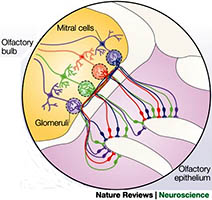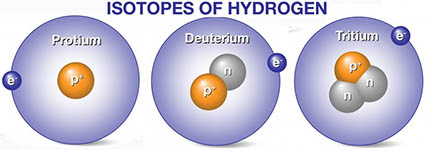A protein's fixed Lock-Key shape may be involved in our sense of smell.
A molecular protein receptor or a complex of receptors with
very specific 3D-shapes can bind to molecules floating
in the air, as in an enzyme lock-and-key fashion
and result in neural signals being sent to the brain,
which are noted and recorded as a distinct smell (say
rotten eggs).
Recent studies by
researchers at Rockerfeller U. suggest that humans can distinguish more
the 1 trillion scents.
Odors almost always represent mixtures of many
different components in various ratios. The scent of a
rose, for example, is made up of a mix of 275
components, with only a few contributing to the smell
we perceive.

